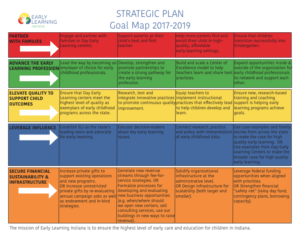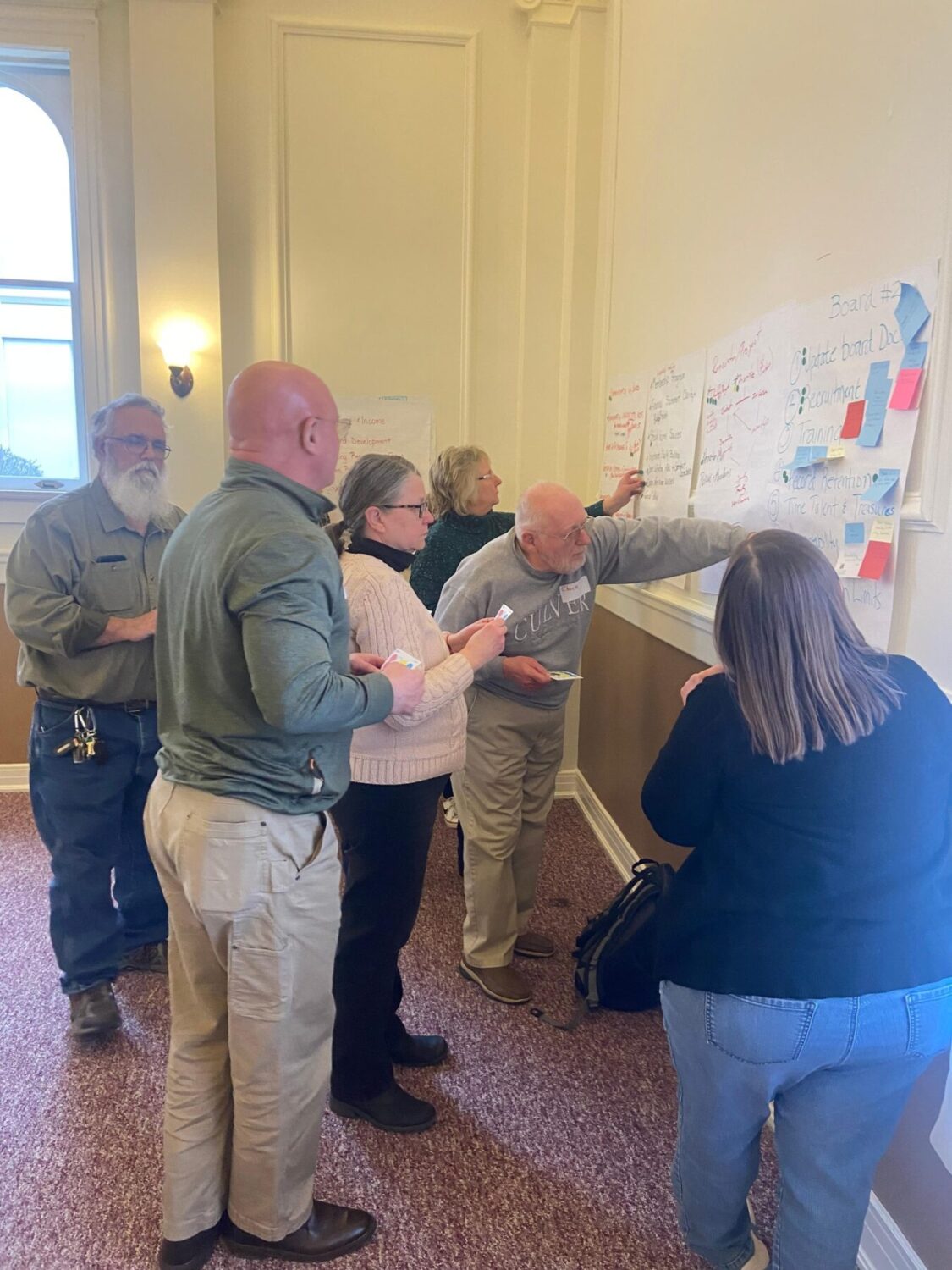“If you don’t know where you are going, how are you gonna’ know when you get there?” Yogi Berra
We have the privilege of working with organizations to help them create their “road map” or strategic plan for the next 3-5 years. In the course of completing these strategic plans, we have developed a formula that guides the process following four key steps.
![]()
4 Steps of Strategic Planning
1. Collaborate to Determine What We Need to Learn
Good strategic plans are not created in isolation in a board room. We follow a participatory approach, which starts with increasing our client’s buy-in and ownership. We work with our client to determine the research questions we want to answer before creating a new strategic plan, as well as all the key stakeholders—both internally and externally—to engage in the strategic planning process. These key stakeholders will vary depending on your organization and context but typically involve some of the following key stakeholders:
- Staff at different levels of the organization
- Board of Directors
- Volunteers
- Current and past funders and donors
- Clients
- Key community partners, stakeholders, and individuals in the community
We then determine the best methods to gather data to answer those questions, including public and internal data, stakeholder feedback, and other research.
When we worked with HSE S.P.O.R.T.S. on their strategic plan, we wanted to get feedback from a broad group of stakeholders. We sent out a survey to the public to gauge their understanding and perception of the organization and received a large response rate. We also met with some of their key community partners for strategic feedback and met with their staff. In combination, we received some rich feedback to inform the strategic planning team and started to create some buy-in and ownership from the community.
organization and received a large response rate. We also met with some of their key community partners for strategic feedback and met with their staff. In combination, we received some rich feedback to inform the strategic planning team and started to create some buy-in and ownership from the community.
2. Analyze the Organization and Landscape
This step of the strategic planning process is so important as it provides the necessary context for understanding the organization and environment in which you operate. We ground the strategic planning process in data. We pull our client’s historical data to review trends, including finances, programs and services, and organizational structure. We utilize publicly sourced data to understand the community and its needs. We solicit feedback from internal and external stakeholders regarding our client’s strengths and opportunities for growth. We benchmark similar organizations in the industry and review policies and funding structures to inform the new strategic plan.
When we worked with Early Learning Indiana on completing their strategic plan, they wanted their strategic planning team to have a good understanding of the environment in which they operate. There had been a significant amount of changes in policies, programming, and priorities in the early learning industry that had implications for their work in the future. Therefore, it was important to understand that context in planning for the future.
3. Facilitate Consensus
Before turning the data, research, and identified best practices into a plan for our clients, we gather the board, key staff, and other stakeholders for a planning retreat to facilitate consensus on the new strategic direction. To prepare for the retreat we compile an Organizational Analysis and Needs Assessment Summary Report summarizing data and information gathered within Step 2 to inform the key research questions identified in Step 1. At the retreat, we work with the team to analyze the data and information using their perspective and expertise—collectively determining key goals and strategies.
There are a variety of group activities that can be used to help the team process the information and begin to identify “what” we want to accomplish. Once the goals (or “what”) have been identified, then we begin to talk about the “how” we will accomplish the work or the strategies. Reference another one of our blogs to learn more about how to facilitate a planning retreat.
4. Create the Strategic Plan
 Now that a clear plan for the future has been reached, it is our job to make sense of all of the information and to package it in a meaningful way for the organization to implement. We don’t believe in creating long strategic plan reports that sit on shelves. We want our clients to use and review their strategic plans on a regular basis. We recommend creating three strategic plan tools:
Now that a clear plan for the future has been reached, it is our job to make sense of all of the information and to package it in a meaningful way for the organization to implement. We don’t believe in creating long strategic plan reports that sit on shelves. We want our clients to use and review their strategic plans on a regular basis. We recommend creating three strategic plan tools:
- One-page strategic plan – this is a one-page overview of your goals and top strategies. This is a tool that can be shared externally with partners, funders and other key stakeholders as well as internally with staff. It could live on your website and be part of your communication tools.
- Strategic plan report – this explains the full process of how the strategic plan was created, the key internal and public data and information collected, and more detailed strategic plan goals, strategies, and actions. This is an internal document for staff use to reflect on the process and have access to all of the comprehensive information collected.
- Implementation plan – this tool helps unpack the strategic plan into actionable steps and monitoring metrics for staff, committees, and the board. It can sometimes be difficult for organizations to take what is written in the strategic plan and put it into action, often resulting in no action or change. By creating this more detailed implementation plan there is a road map for how the organization will accomplish the goals identified over the next 3-5 years.
Completing a strategic plan can be a daunting or exhilarating process for some organizations. We love to partner with organizations to help you think about the future and create a plan that will get you there. You can find out more about our strategic planning services here.

